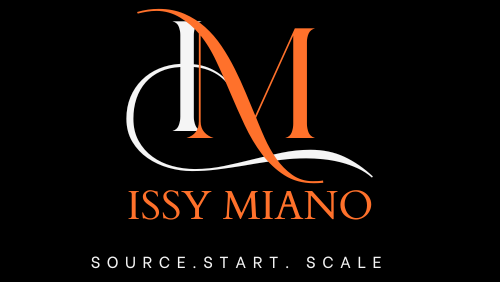🚢 How to Import Products for Resale (Customs, Duties & Freight Simplified)
Importing products can sound intimidating — especially when words like HS codes, duties, and freight forwarders get thrown around.
But here’s the truth: once you understand the basics, importing is simply a repeatable process — not a gamble.
Over the years, I’ve imported clothing, beauty products, and home goods from the U.S., Turkey, and China, and I’ve refined a process that small business owners can easily follow.
In this guide, I’ll simplify how to import products for resale — step-by-step — so you can avoid costly mistakes, delays, and customs issues.
🎁 Download the Import & Freight Checklist to keep this process organized.
🌍 Step 1: Choose the Right Product Category
Before shipping anything, confirm the product type is allowed in your country.
For example:
Cosmetics may require ingredient approvals or labeling.
Electrical items might need safety certification.
Kitchenware touching food must meet FDA or local standards.
💡 Issy’s Tip: Always check your country’s import regulations before paying for bulk. It’s easier to pivot early than to fight with customs later.
🧾 Step 2: Confirm Supplier Export Readiness
Ask your supplier for:
Commercial Invoice
Packing List
Certificate of Origin (COO)
Material Safety Data Sheet (MSDS) (for cosmetics or chemicals)
HS (Harmonized System) Code for each product
These documents are essential for customs clearance and duties calculation.
If your supplier hesitates or doesn’t know what an HS code is — 🚩 that’s a red flag.
📦 Step 3: Decide Your Shipping Method
| Shipping Type | Ideal For | Delivery Time | Cost | Example |
|---|---|---|---|---|
| Air Freight (Courier) | Small/light orders | 3–10 days | High | DHL, FedEx, UPS |
| Air Cargo | Medium orders (50–500kg) | 7–14 days | Moderate | Freight forwarder |
| Sea Freight | Large shipments | 25–45 days | Low | FCL/LCL shipping |
| Express Consolidation | Small businesses sharing a container | 10–20 days | Affordable | Freight groups |
💡 Issy’s Tip: For your first few imports, use air freight — faster, simpler, and safer for learning the process.
⚖️ Step 4: Understand Customs Duties & Taxes
Each product is assigned a HS code (Harmonized System Code) used globally to classify goods.
Your customs agent uses this code to calculate import duty.
Typical duty range:
Clothing: 10–25%
Cosmetics: 5–20% (depending on ingredients)
Kitchenware/Home Décor: 5–15%
Then add:
Import VAT/GST (usually 10–20%)
Customs clearance fee ($20–$100 depending on country)
📈 Pro Tip: Always budget 25–30% above your landed cost to cover duties and clearance for safety.
🧳 Step 5: Work With a Freight Forwarder
A freight forwarder handles the transportation, customs paperwork, and delivery of your goods.
They’re like your travel agent for cargo.
They can:
✅ Book space on ships or planes
✅ Handle customs documentation
✅ Consolidate shipments from multiple suppliers
✅ Deliver goods to your warehouse or doorstep
Recommended freight options for small businesses:
DHL Global Forwarding
Flexport
Freightos (great for rate comparison)
Alibaba Freight / Cainiao Logistics
MyUS / Ship7 (for small U.S. purchases)
💬 Issy’s Tip: Choose a forwarder who understands small-volume cargo (LCL) — big companies often prioritize full containers.
📋 Step 6: Calculate Landed Cost Correctly
Your landed cost includes everything it takes to get your product into your hands:
Landed Cost = Product Cost + Shipping + Insurance + Duty + Customs Fees + Local Delivery
Once you have that, use my Break-Even Calculator to confirm profitability.
🎯 Aim for a minimum margin of 55–70% after all import costs.
📦 Step 7: Handle Customs Clearance Smoothly
For fast clearance:
Make sure your invoice values are realistic. Undervaluing shipments causes delays or fines.
Ensure labels match product descriptions (especially for cosmetics and foodware).
Keep your import license or business registration ready.
Pay duties promptly — delays increase storage costs.
💡 Issy’s Tip: Many small importers get flagged because of mismatched paperwork. Triple-check that your invoice, packing list, and shipment labels all match exactly.
🧠 Step 8: Store, Inspect & Record Upon Arrival
Once products arrive:
Inspect for damage or shortages before signing delivery.
Check product labels, expiry dates (if applicable), and packaging.
Store in a clean, dry, secure space.
Update inventory and reorder timelines.
If any issues arise, contact your supplier within 48 hours and include unboxing photos.
🚫 Common Import Mistakes to Avoid
❌ Paying full amount before confirming shipping terms.
❌ Not verifying supplier export documents.
❌ Ignoring HS codes or customs requirements.
❌ Forgetting to insure your cargo.
❌ Mixing restricted and unrestricted goods in one shipment.
✅ Always plan your shipment 4–6 weeks ahead and keep digital copies of all paperwork.
📊 Example: Importing 100 Ceramic Mugs from the USA
| Item | Cost |
|---|---|
| Product Cost | $250 |
| Shipping (Air Freight) | $150 |
| Import Duty (10%) | $25 |
| VAT (16%) | $68 |
| Customs & Clearance | $40 |
| Total Landed Cost | $533 |
If you sell at $10 each (100 units = $1,000 revenue):
Gross Profit = $467
Gross Margin = 46.7% → still profitable if priced strategically (bundle or upsell).
📈 Try adding packaging & delivery fees to your calculator to refine your real profit margin.
🔗 Related Resources on IssyMiano.com
❓ FAQs
1. Do I need a business license to import goods?
Yes. Most countries require a business or importer registration number for customs clearance.
2. Can I import without using a freight forwarder?
Yes, but it’s riskier. Freight forwarders simplify customs, insurance, and delivery logistics.
3. How do I know my import duties before shipping?
Use the HS code to check tariff rates on your country’s customs website or consult your forwarder.
4. What’s the cheapest shipping option for small retailers?
Air freight for up to 100kg, or shared consolidation for slightly larger shipments.
5. How long does customs clearance take?
Usually 1–3 business days if paperwork is correct. Delays occur when invoices or product descriptions don’t match.
✨ Conclusion
Importing isn’t complicated — it’s a skill. Once you understand how freight, duties, and customs work, you can import confidently, cut costs, and build reliable global supply chains.
Start by downloading the Import & Freight Checklist and the Supplier Vetting Checklist to stay organized.
Then explore the verified supplier lists for your category:
Because when you import smart, you don’t just buy stock — you build sustainability and scale. 🌍


